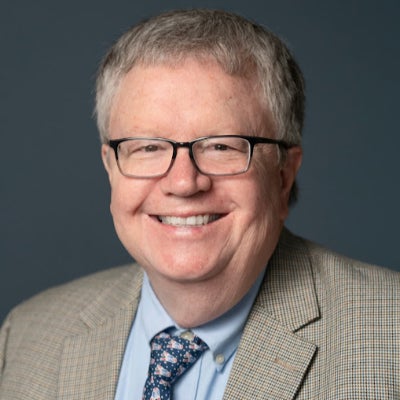On September 1, Dr. James Miller took over the co-directorship of the National Institute of Undersea Vehicle Technology (NIUVT). Miller, University of Rhode Island’s chair of ocean engineering, replaced Dr. Arun Shukla in the role. NIUVT is a joint effort between URI and the University of Connecticut (UCONN). The Institute, founded in 2017 and funded by the Office of Naval Research, fosters research that supports General Dynamics Electric Boat and the Naval Undersea Warfare Center in Newport, Rhode Island.
At the same time, Miller will be continuing his work on the Board of Directors with FarSounder, a developer of 3D Forward Looking Sonar technology (3D FLS). The business is run by Matthew Zimmerman, a URI grad.
Although his new appointment has meant a workload increase, Miller enjoys the challenge. “I’m certainly eager. I’m excited because it’s an opportunity to make a difference and to contribute to my institution and to the Navy. I feel strongly about the Navy. I’ve had a 40-year career in education, and I have students who are working on projects that are important to the Navy. I have had students who have gone on to be civilian engineers and submarine officers for the Navy . So yes, I really want to do a good job.”
Miller is no stranger to the NIUVT, having worked with the organization since its inception. He’s confident in his ability to fill the role. “There are always questions when you start something new. I’ve been there from the beginning, and I’ve had research projects in the Institute. In fact, a lot of the projects already go through ocean engineering because we’re naturally a Navy-related field.
“The Navy is interested in everything, from oceanography to metallurgy to signal processing to hydrodynamics. They make complicated machines, and they’re good at it.” Miller points to the long history the Navy has of building seagoing vessels, dating back to the six original ships built during colonial times. One ship – the USS Constitution – is still active today. “That was built in Boston and stays in Boston,” Miller says. “It’s still a Navy ship. I like the thought of that. There’s technology that went into building those ships that made Old Ironsides what it is. They were formidable, and the Navy wants to keep making them formidable.”
The FarSounder Project
Though the Miller/Zimmerman team formed FarSounder in 2001, the two go back to Zimmerman’s undergraduate days. “I was in the ocean engineering department at URI. Jim was not my undergraduate student advisor, but he’s very enthusiastic and energetic, and a lot of other students and I used him as our unofficial undergraduate advisor,” Zimmerman said.
The FarSounder technology allows ships and large vessels the ability to spot obstacles ranging from underwater rock formations to whales before a potential collision happens. “Our original motivation was, ‘How do we avoid hitting whales, causing ship strike death to these great animals? And how do we avoid hitting rocks causing oil spills? The first consideration was that we did not want to develop a technology to solve one environmental problem and simply replace it with another. So our technology has no effect on marine life. Most species can’t even detect that we’re creating these signals in the water, which is very different than other types of sonar technologies that are used in the ocean. We’ve made sure to make sure it’s not detrimental to the environment.”
The Technology Matchmaker
Despite the increased workload that comes with his recent position, Miller is optimistic about the ongoing evolution of the NIUVT. “I wouldn’t say there are challenges ahead, so much as there are opportunities. There’s a lot of young faculty that are coming in that I’d like to reach out to, those who may not know what NIUVT is, and there might be opportunities for them to try out an idea.” He sees his long association with the Navy as a boon for newer faculty. “I’m almost like a switchboard operator, connecting project ideas to support. I’ve been in Navy research for decades, so I’ve met a lot of people and seen a lot of things. Maybe I could make those switchboard connections between a young faculty member and the organization.”
He points to the example of Bradford Knight, a new assistant professor. “He studies propellers using computational fluid dynamics. I know people from the Naval Surface Warfare Center in Carderock, maryland and they do a lot of propeller work. I’ve worked with them, and now I’ve connected the younger faculty member with them. As a matter of fact, they just hired three of our ocean engineers.
“Maybe the opportunities that come with this position will grow. The institute has been very successful under Arun Shukla here at URI and UCONN engineering professor Rich Christiansen. I’d like to let everyone know in the College of Engineering and their colleagues and their partner colleges at URI that they should think about applying to NIUVT with their ideas.”
By Hugh Markey

